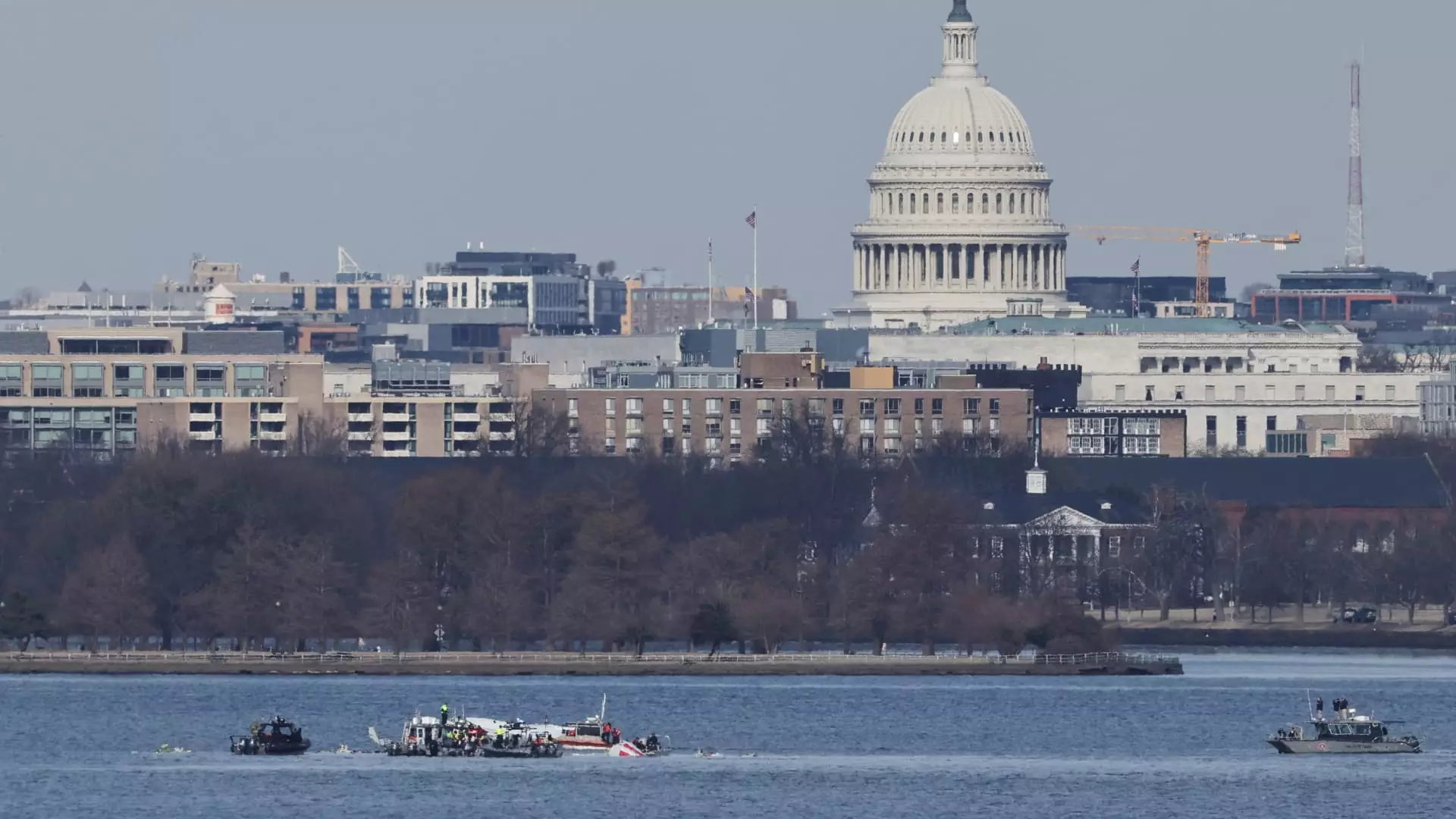On a seemingly ordinary Wednesday night, a catastrophic mid-air collision claimed the lives of 67 individuals, marking a dark chapter in American aviation history. The collision involved a military Black Hawk helicopter and an American Airlines jetliner, leading to a fiery disaster over the Potomac River, just near Reagan National Airport in Washington, D.C. The suddenness of the incident raises numerous questions about safety protocols and redundancies in air traffic control, especially in a region as densely trafficked as the nation’s capital.
The tragedy unfolded as the PSA Airlines Bombardier CRJ-700, operating as American Airlines Flight 5342, was on its final approach, approximately 300 feet above the ground. Unbeknownst to the flight crew, a Black Hawk helicopter was also maneuvering within the vicinity. Both aircraft met in a fireball of destruction close to the airport, and tragically, all 64 passengers on the flight, along with the three crew members aboard the helicopter, perished.
In the immediate aftermath, investigators launched an extensive probe into the incident. A significant focus is placed on the altitude at which the Black Hawk was operating. Official protocols dictate that helicopters in the Washington, D.C. area must adhere to a maximum altitude of 200 feet while navigating busy airspace. However, reports emerging from defense officials suggest that the military helicopter may have operated above this previously established limit, raising alarms about a potential systemic failure in aviation safety.
A crucial element of the investigation lies in how airspace is managed in and around Washington, D.C. With a busy air corridor that interlinks various military locations and facilities, it is imperative that all aircraft adhere strictly to predetermined flight tracks. According to Todd Inman, a member of the National Transportation Safety Board (NTSB), there are designated helicopter zones which are vital for maintaining order in the airspace. The Black Hawk was reportedly transitioning zones as per standard procedures, yet its exact altitude at the moment of the collision is now under scrutiny. Did it navigate these pathways correctly, or was there a lapse in protocol?
Adding to the complexity of the situation, the Federal Aviation Administration (FAA) has since introduced stricter flight regulations in the area. While some exemptions remain for critical missions such as medical evacuations and law enforcement, the FAA must now ensure that air traffic in the metropolitan corridor does not become a contributing factor to such tragedies.
The efficacy of air traffic control, particularly at significant hubs like Reagan National Airport, has been a longstanding concern. Reports indicate that on the night of the collision, staffing was not at optimal levels. Issues of controller shortages and the combination of responsibilities among the air traffic staff may have contributed to an environment where risks were heightened. Even more concerning is the revelation that the supervising controller allowed another to leave their shift early, potentially exacerbating an already strained situation during a busy hour of flight operations.
Retired airline pilot and aviation safety consultant John Cox underscored the concentration that pilots must maintain as they align with a runway during landing. Distractions and gaps in air traffic support could lead to disastrous miscommunication or oversight, as was observed in this incident.
As investigators continue to analyze flight data and cockpit recordings, there is a profoundly sensitive acknowledgment that this collision signifies an end to an era of relative air safety in the United States. Since 2009, there had been no fatal commercial crash, despite a 25% increase in passenger traffic. The implications of this accident are mistaken for mere statistics; they represent lives cut short and families affected by an unthinkable catastrophe.
As this investigation unfolds, the aviation community must take a collective breath and assess what can be learned from this harrowing event. A thorough re-evaluation of safety protocols, air traffic arrangements, and pilot-controller interactions is imperative to ensure that such a disaster is never repeated. The notion that the aviation ecosystem is designed around redundant safety measures must remain a priority as the country seeks to recover from the shock of this tragic event while pushing towards a safer aviational future.
This accident serves as a stark reminder: air travel, though statistically one of the safest modes of transport, is not immune to lapses and tragedies. The lessons gleaned from the investigation will hopefully usher in enhancements to protocols that will fortify the safety nets essential for protecting lives in the skies.


Leave a Reply